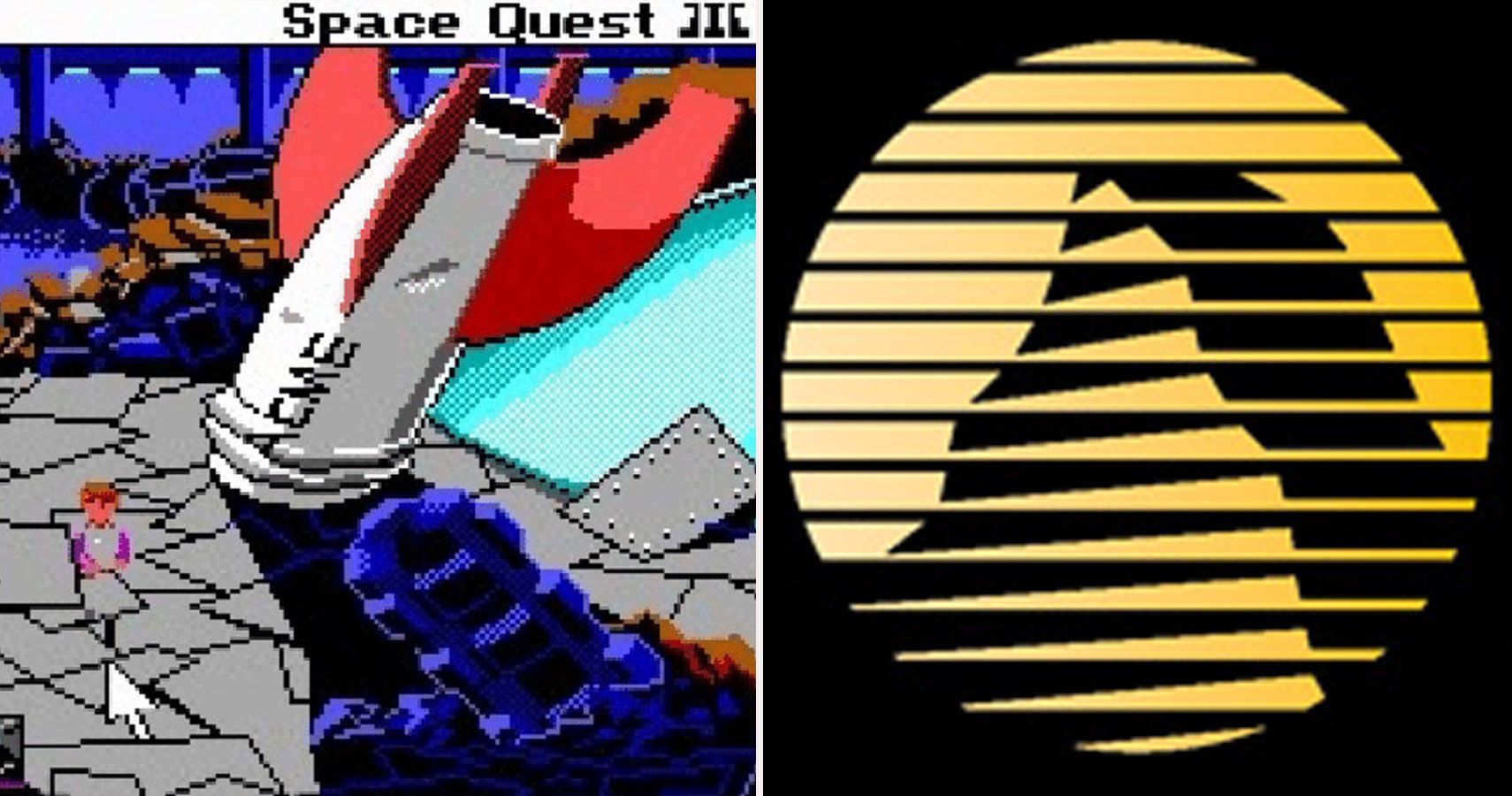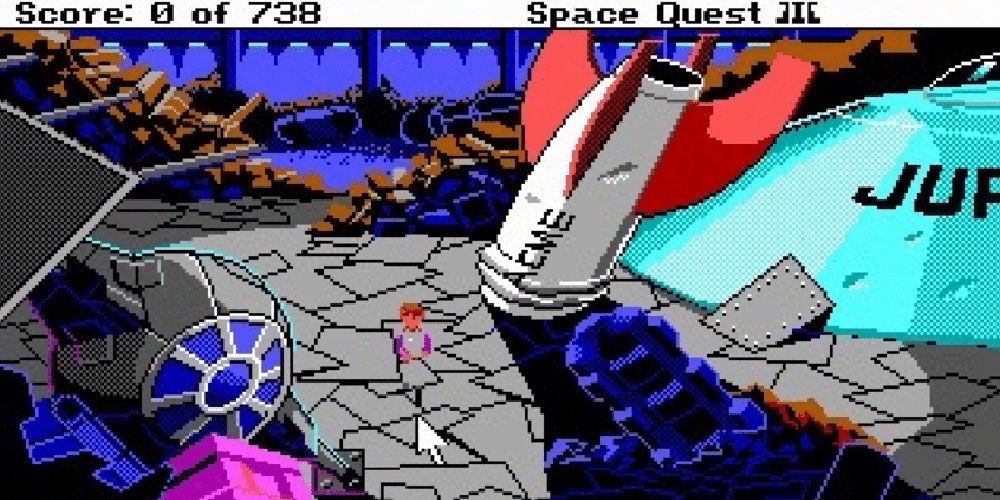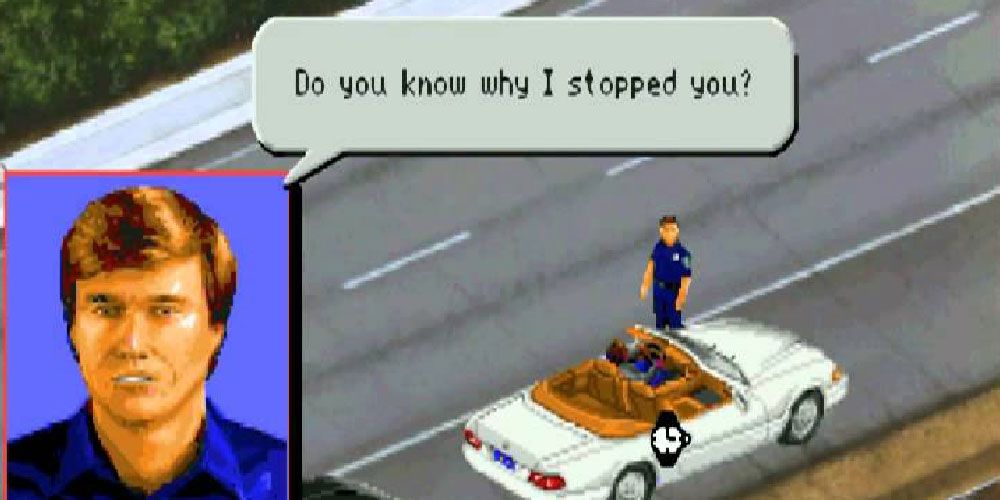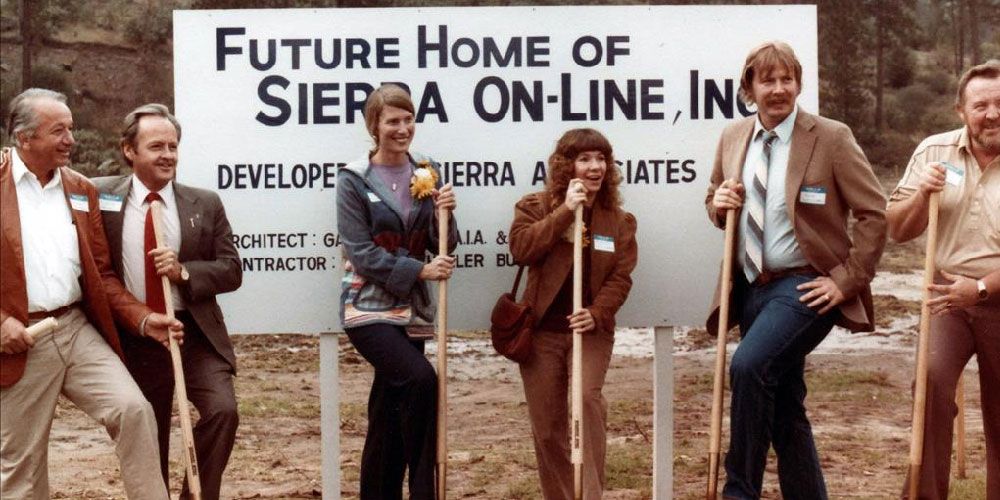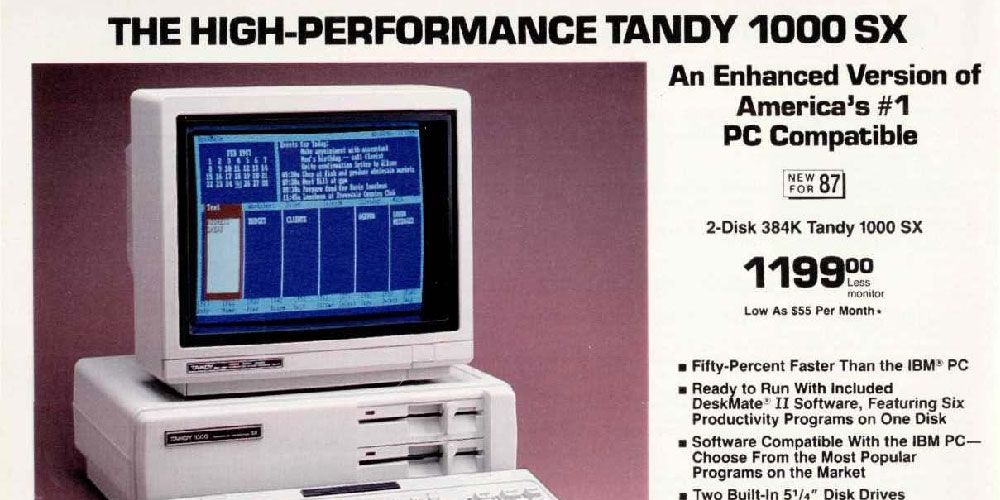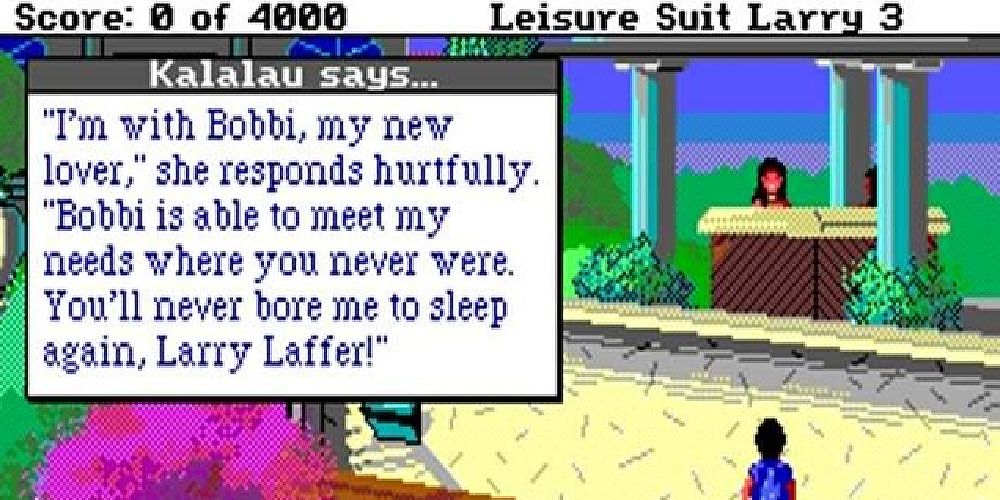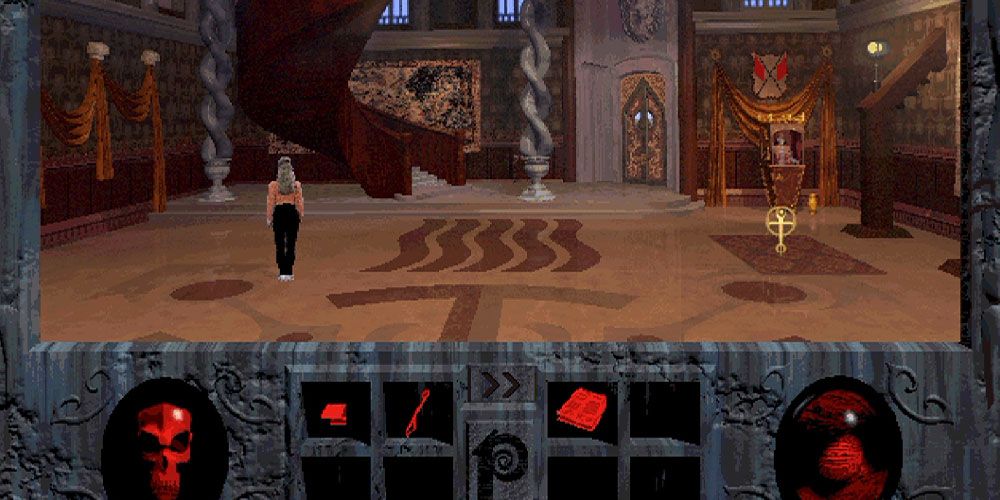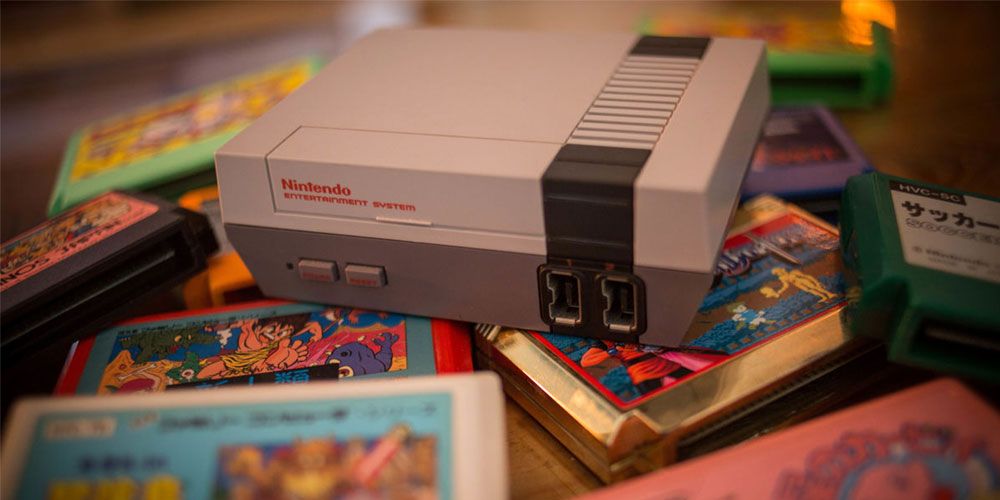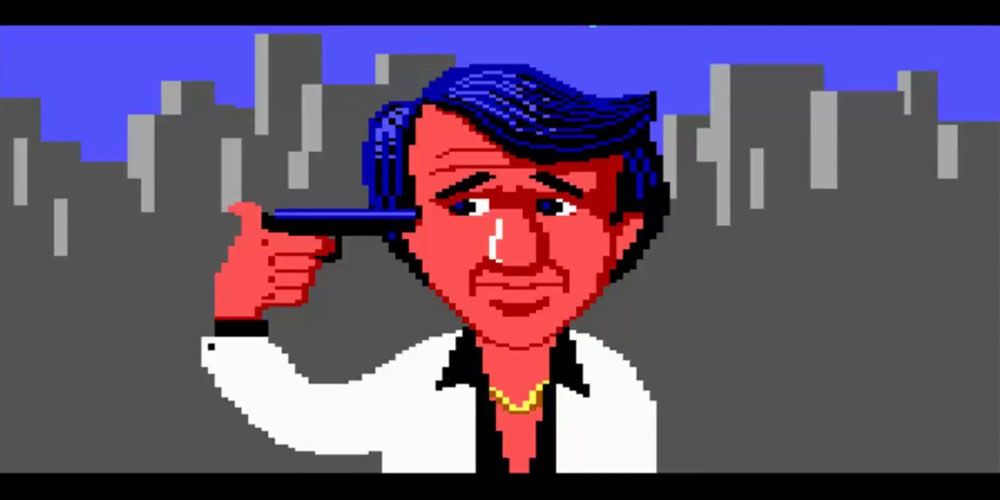Sierra On-Line deserves a lot of credit for helping to push the video game market forward at a time when nobody was really thinking much about it. The video game crash of 1983 left the fledgling industry in tatters, but while Nintendo was attempting to turn things around on the console side, Sierra was doing the same on PC.
Today we're taking a look at 10 ways that Sierra On-Line changed video gaming forever, and not just for PC gamers. We're going to be examining key facts that demonstrate what a pivotal force they were in the advancement of gaming, as a whole.
10 THEY KICKED OFF THE STORYTELLING GENRE
Sierra's "Quest" series of adventure games brought immersive storytelling to video gaming at a time when the public's consciousness was still on Pac-Man, and only beginning to absorb Super Mario Brothers.
In truth, Sierra had been on this track since 1980 with the release of their seminal title Mystery House for the Apple II, but it wasn't until the release of King's Quest I: Quest For The Crown that the company truly hit its mark. That game helped influence hundreds of developers who saw the potential of well-built 3D worlds and story-crafting.
9 THEY WORKED WITH WHAT THEY HAD
It was IBM who approached Sierra in 1982 to request a series of games for the launch of the PCjr, but the technology was still in its infancy. In order to make the game as immersive as possible, the team had to work with the technology on hand, at the time.
This meant creating games in an era where SoundBlaster cards were still years away from the drawing board. When the PCjr failed, Sierra quickly shifted their attention to other IBM-based machines such as the Tandy 1000, breathing new life into their game library, and possibly preventing its demise. Sierra's devs were renowned for drawing out as much as they could from existing hardware, and the results spoke for themselves.
8 THEY PIONEERED ANIMATION
At the time, video game animation was practically stone-age. Even titles being released for the NES console were 2 or 3 frames per animation, at best. Sierra went a step further by crafting context-specific animations that expanded the play experience.
This included a variety of imaginative death scenes, vehicle sequences, environmental traps, and player actions such as swimming. As the series progressed, the animations became more lifelike and immersive, which helped games like King's Quest IV. They're not much to look at by today's standards, but in an age where motion-capture technology was too advanced even to dream of, it was magic.
7 THEY TACKLED MULTIPLE GENRES
Sierra could have focused on a specific kind of game, but they weren't interested in hedging themselves into the corner. Instead, the company let the creative juices flow, and green-lit ideas that would be deemed too risky in today's corporate video game world.
Space Quest was a wacky sci-fi comedy game with a ton of hilarity, while Police Quest sought gritty realism. Manhunter would flirt with the horror genre, while The Colonel's Bequest would put players in the middle of a classic-style murder mystery. Coupled with other third-party games being released by the company at the time, such as Red Baron, Thexder and Silpheed, it was clear that Sierra was interested in broadening its horizons.
6 THEY FLEW BY THE SEAT OF THEIR PANTS
Sierra wasn't afraid to hire top talent, and let that talent work any way they wished. Sometimes that meant accommodating team members in ways that were practically unheard of during the rigid corporate structure of 1980s business.
Developers like Al Lowe and Dave Murray worked from home, while Police Quest creator Jim Walls worked out of a guest house on the property of Sierra's President, Ken Williams. Others would work on titles inside trailers on the company's Oakhurst parking lot. Whatever worked, Sierra was for it, offering a level of flexibility that helped push better game development.
5 THEY PUSHED HARDWARE SALES
It could be argued that the demise of the PCjr was an opportunity for Sierra to spread its wings and sell titles on a variety of competing systems. This is true, and the trend would continue across the hardware landscape. As the company flirted with each new emerging technology, they also helped drive sales so that players could enjoy the games.
The audio landscape is perhaps the most obvious example of this. As Roland MT-32s, SoundBlasters and Ad-Lib cards gained prominence, Sierra would take advantage of the betterment of the game experiences. This hand-in-hand approach was a win-win for developer, manufacturer and end-user.
4 THEY WROTE OUTSIDE CURRENT BOUNDARIES
Sierra games are delightfully notorious for bucking what would have been industry trends, if the video game market had gone a different way in the 1980s. Their content was off-the-cuff, down-to-earth and highly entertaining. In-jokes were a popular mainstay of their Quest games, as was the company's insistence on breaking new storytelling ground.
For instance, Manhunter displayed a grisly amount of blood and gore at a time when MPAA ratings weren't even a thought. Young boys would hide copies of Leisure Suit Larry under their mattresses so their parents didn't find out, and Codename: ICEMAN would toss players into the driver's seat of a nuclear submarine, forcing them to learn all of its ins and outs in order to succeed. At every turn, Sierra was doing something that would earn the ire of today's industry, while challenging players to step up. This renegade attitude probably aided the company's success in the long run.
3 THEY LEVERAGED THE CD-ROM
Not many companies were tackling CD-ROM technology in the early 90s, but Sierra was determined to be one of them. They weren't interested in the technological bragging rights that came with adopting the format. Rather, Sierra knew that to expand on its storytelling experiences, they'd need a more convenient and viable media system.
After all, Sierra's second-gen adventure games were already taking up as many as 12 floppy disks, and they couldn't go on that way for much longer. By moving to CD-ROM, Sierra was able to deliver better play experiences that eventually opened doors for games like Phantasmagoria.
2 THEY PROVED HOW VIABLE VIDEO GAMES WERE
The success of the Nintendo NES on the home console market had already brought back video games from the brink of death, but it would be a severe mistake to discount the influence Sierra had on the PC front.
And without the PC, it's doubtful video games would have continued to expand the way they did. Today's symmetry between home consoles and PCs has never been more clear, and it requires only a small hop from one to the other in terms of technology. Back in the day, PC and console gaming were as different as apples and oranges. Sierra's success as an adventure game company would have long-lasting impacts on future franchises like The Elder Scrolls, Fallout and many more.
1 THEY DEMONSTRATED THE DANGERS OF CORPORATE INTERFERENCE
Sierra's meteoric growth and massive success were matched only by its shocking downfall. It all started when Sierra was purchased by CUC International, who made huge sweeping changes. In the wake of those changes, many irate fans felt that game quality had taken a nosedive, and it seemed like the end was nigh.
The final nail in the coffin occurred when CUC International was busted in one of the most notorious accounting fraud schemes in history. As corporate heads admitted the charges, the layoffs continued as stocks went downhill, and Sierra was right in the thick of it. The company would later change hands before ending up in the lap of Vivendi.

